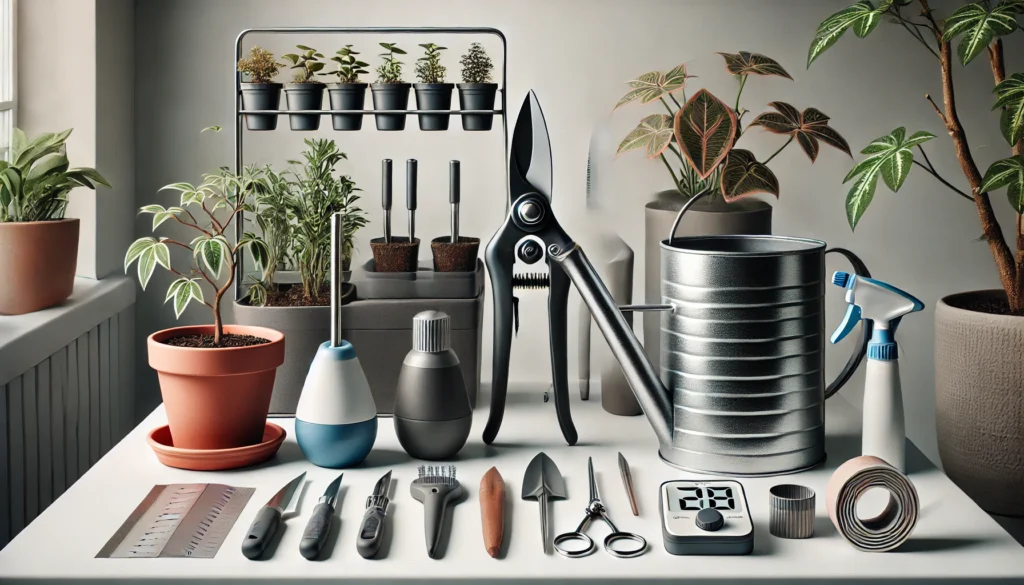
Essential Basic Houseplant Tools for Novices: Must-Have Tools for Plant Care
Starting your plant journey can be both exciting and overwhelming, especially if you’re new to caring for houseplants. One of the easiest ways to ensure your plants thrive is by using the right tools. In this article, we’ll explore the basic houseplant tools for novices—the essential equipment that will make plant care simple, efficient, and enjoyable. Whether you’re nurturing your first houseplant or expanding your collection, having the right tools at your disposal can make a world of difference. Let’s dive into the must-have items every beginner should have in their plant care toolkit!
Table of Contents
ToggleWhy the Right Tools Matter
Using the right tools for plant care is essential for achieving success in any gardening project. The right tools make the job easier, save time, and help you maintain the health of your plants. From pruning shears to watering cans, every tool has a specific purpose that helps you meet your plant’s needs.

- Efficiency and Precision: The right tools help you perform tasks like pruning, planting, or harvesting more efficiently. Tools designed for specific tasks provide better precision, which means less stress on your plants and more consistent results. For example, using sharp pruning shears ensures clean cuts, preventing damage to stems and encouraging healthy growth.
- Safety and Comfort: Using improper tools can lead to injuries or strain. Gardening tools are designed with ergonomics in mind, offering comfort during long hours of work. This reduces the risk of repetitive strain injuries, helping you enjoy gardening without physical discomfort.
- Improved Plant Health: Some tools, like a good-quality soil thermometer or moisture meter, allow you to monitor the plant’s environment. Understanding the needs of your plant in real-time ensures you provide the right amount of water, sunlight, and nutrients, keeping your plants healthy and thriving.
In summary, having the right tools isn’t just about convenience—it’s a critical part of effective plant care that leads to healthier plants, a more efficient gardening process, and a more enjoyable experience overall.
Must-Have Tools for Novice Houseplant Care
When you’re just starting out with houseplants, having the right tools can make all the difference in your plant care routine. These essential tools will help you maintain healthy plants with minimal effort. Here’s a list of must-have items for novice houseplant care:
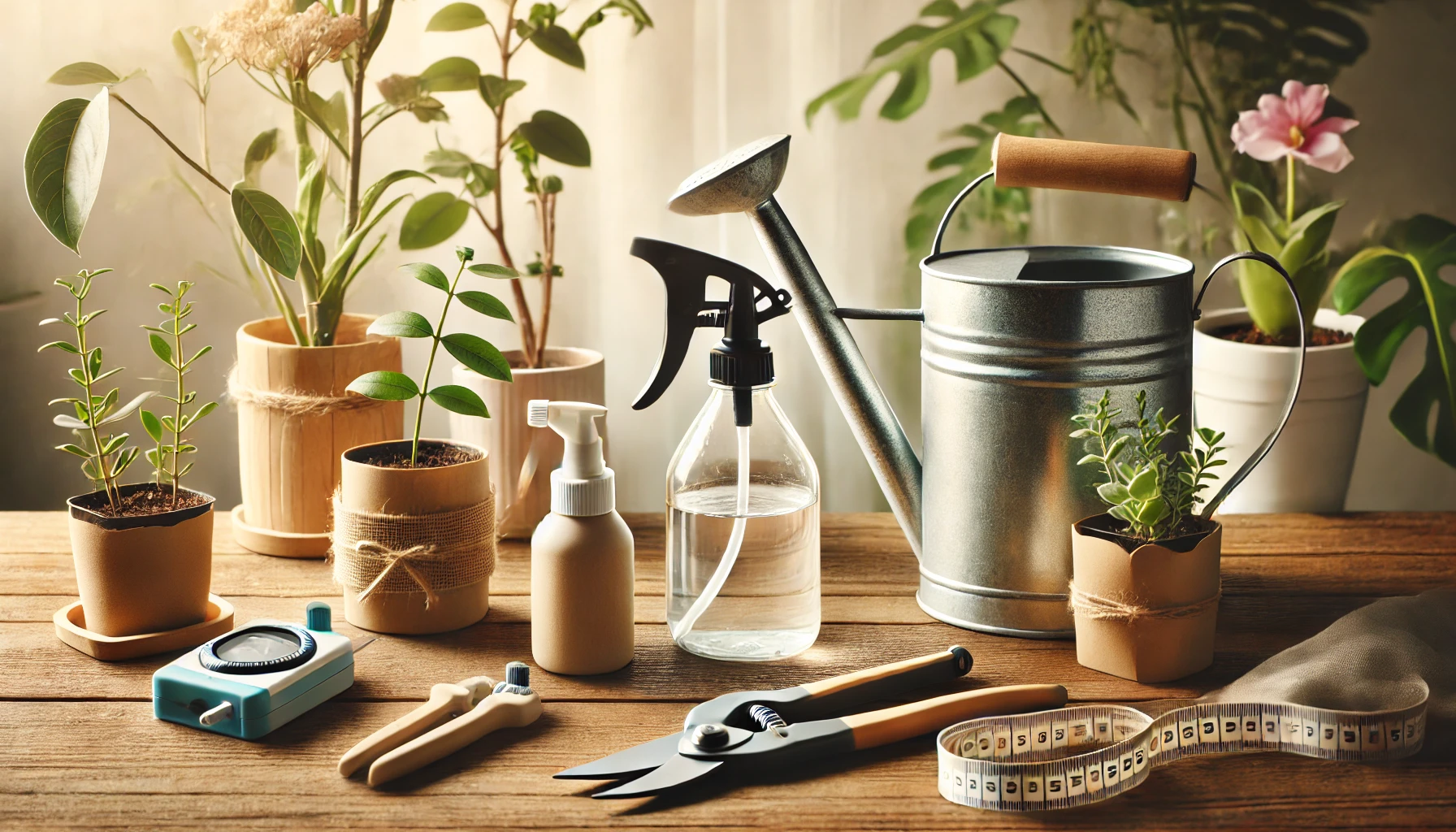
Watering Can with a Narrow Spout
A watering can with a narrow spout ensures you can water your plants without over-saturating the soil. It allows for precise watering, keeping your plants hydrated without creating a mess.
Moisture Meter
A moisture meter is a simple, yet effective tool that helps you determine when your plants need water. This takes the guesswork out of watering and prevents over or underwatering, a common mistake for beginners.
Pruning Shears
Pruning shears are essential for trimming dead leaves and stems. Regular pruning promotes healthier growth and keeps your plants looking tidy. Choose sharp, well-crafted shears for easy and precise cuts.
Plant Pot with Drainage Holes
A pot with proper drainage is critical for plant health. It allows excess water to escape, preventing root rot. Make sure every plant pot you use has these holes to ensure proper water flow.
Spray Bottle
For plants that thrive in humid conditions, a spray bottle is perfect for misting the leaves. It helps maintain the necessary humidity levels, especially for tropical plants.
Plant Fertilizer
A good-quality fertilizer is crucial to promote healthy growth. Choose a balanced fertilizer suited to your plant type, and apply it regularly according to the label instructions.
Plant Stand
A plant stand helps position your plants for optimal sunlight exposure while adding a decorative touch to your space. It also prevents water stains on your floors.
Grow Light
If your home doesn’t receive much natural sunlight, a grow light can be a lifesaver. It mimics sunlight, providing the right spectrum for photosynthesis and helping your plants thrive indoors.
By investing in these essential tools, you’ll be well on your way to becoming a successful plant parent. These items will support your plants’ growth and ensure that you’re giving them the care they deserve.
Optional Tools for Advanced Care (But Still Beginner-Friendly)
While caring for a Tomatillo plant can be straightforward, a few optional tools can help enhance growth, streamline care, and ensure a bountiful harvest. These tools aren’t essential but can make gardening more manageable, even for beginners.
Self-Watering Pots A self-watering pot is a great option for those looking to minimize watering frequency. These pots feature a reservoir at the bottom that allows the plant to absorb water as needed. This reduces the risk of underwatering or overwatering, keeping your tomatillo plant healthy and thriving.
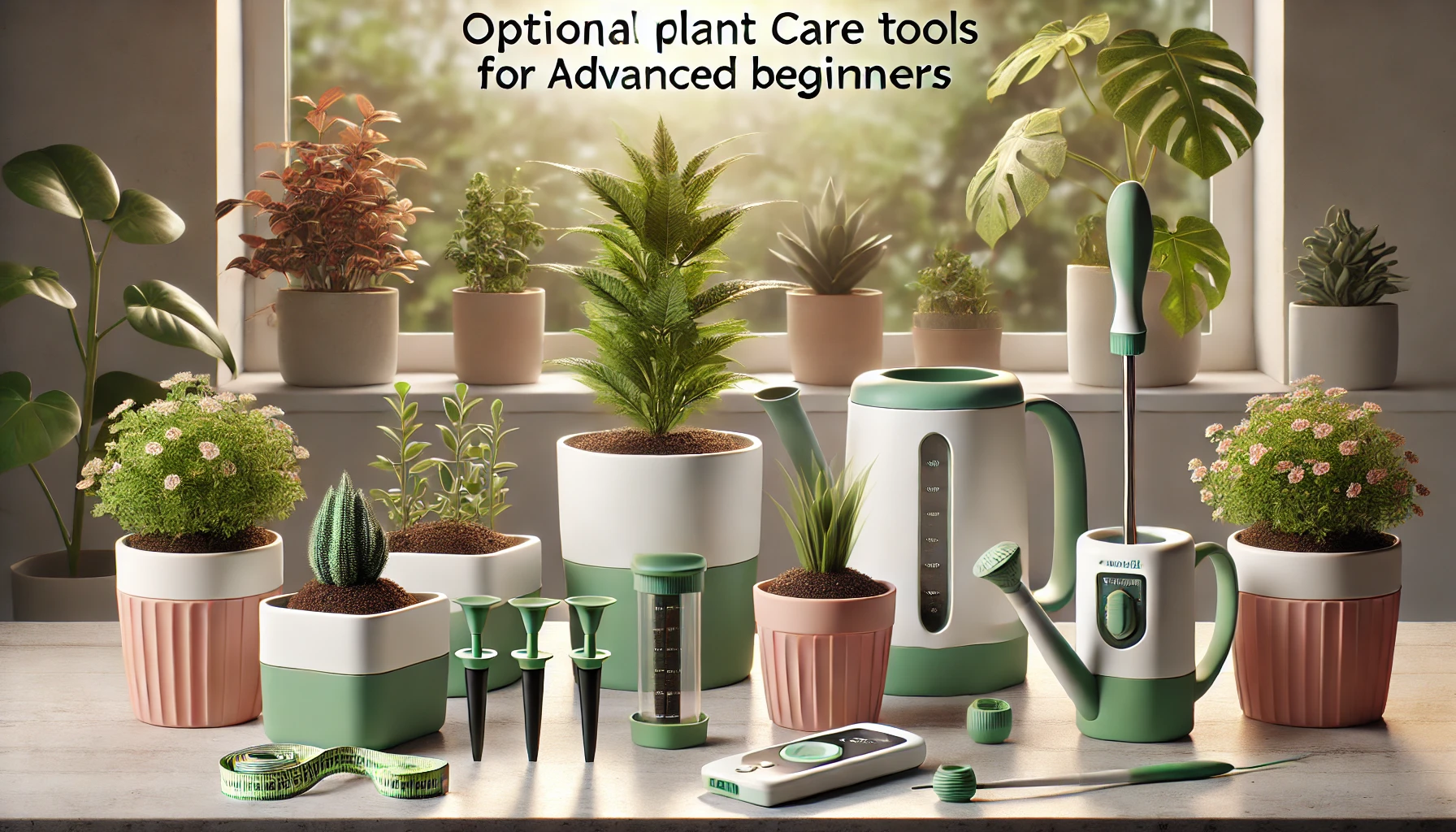
Garden Stakes and Cages Tomatillo plants grow tall and can become top-heavy, especially when they start bearing fruit. Using garden stakes or tomato cages helps support the plant, keeping it upright and preventing branches from breaking under the weight of the fruit. These supports are easy to install and can be found at most garden stores.
Soil Moisture Meter Monitoring soil moisture is key to preventing both underwatering and overwatering. A soil moisture meter takes the guesswork out of watering by providing accurate readings of the soil’s moisture levels. It’s a simple tool that helps ensure your tomatillo plant gets just the right amount of water.
pH Testing Kit While tomatillo plants thrive in slightly acidic to neutral soil (pH 6.0 to 7.0), a pH testing kit can help ensure your soil remains within the ideal range. Testing the pH is a quick and inexpensive way to prevent issues that could arise from soil that’s too acidic or alkaline.
Pruning Shears Regular pruning helps your tomatillo plant maintain healthy airflow, reducing the risk of diseases and promoting better fruit production. A sharp pair of pruning shears makes the job easier and ensures clean cuts, minimizing stress on the plant.
These tools can simplify tomatillo care and give your plant the extra support it needs to grow strong and produce a rich harvest. Whether you’re a first-time grower or looking to refine your skills, these beginner-friendly options can make the gardening process more enjoyable and efficient.
How to Use These Tools Efficiently
To make the most of the tools available for growing and maintaining your plants, efficiency is key. Here are some expert tips to ensure you use each tool effectively:
Plan Your Work in Advance
Before picking up any tool, take a few minutes to plan what you need to accomplish. Whether you’re pruning, watering, or fertilizing, knowing the task ahead of time will help you use the right tools and avoid wasting effort.
Clean and Maintain Tools Regularly
Keep your tools in top condition by cleaning them after each use. This not only extends the lifespan of the tool but also prevents the spread of diseases between plants. Wipe down blades with disinfectant, sharpen edges, and store them properly.
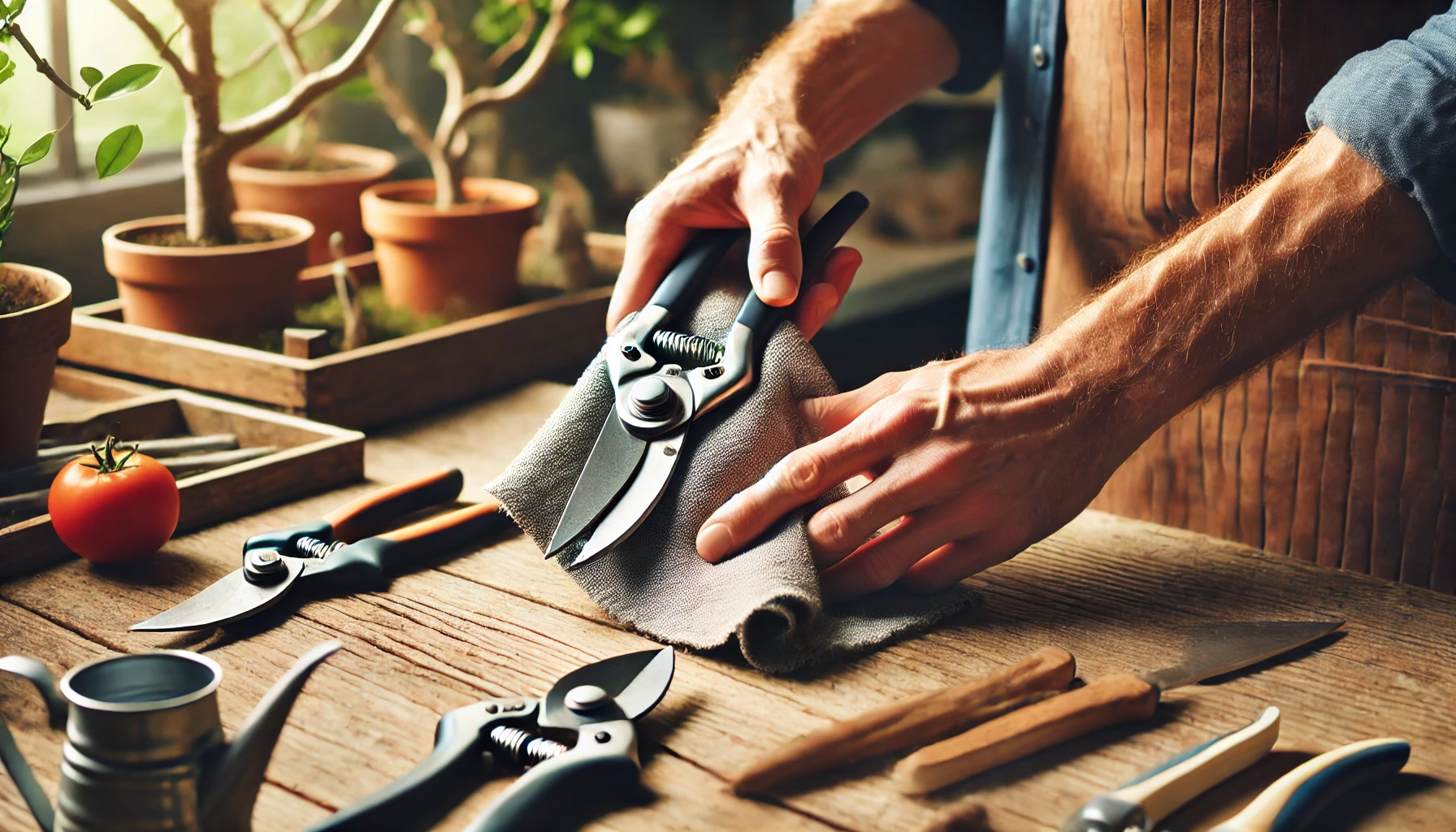
Use Tools for Their Intended Purpose
Always use each tool for its designed purpose. For instance, pruning shears are ideal for trimming branches, while a spade is better for digging. Using the right tool for the job makes your work faster and more effective.
Organize Your Workspace
A tidy gardening space improves efficiency. Store tools in a designated area, making sure the most frequently used ones are easy to reach. This saves time and effort when you’re in the middle of a task.
Learn the Best Techniques for Each Tool
Take time to learn the proper techniques for using each tool. For example, when using a rake, keep the tines angled slightly upwards to avoid damaging plants. Mastering tool use reduces mistakes and increases the quality of your work.
By applying these strategies, you’ll get the best results with less effort, saving time while keeping your plants healthy and thriving.
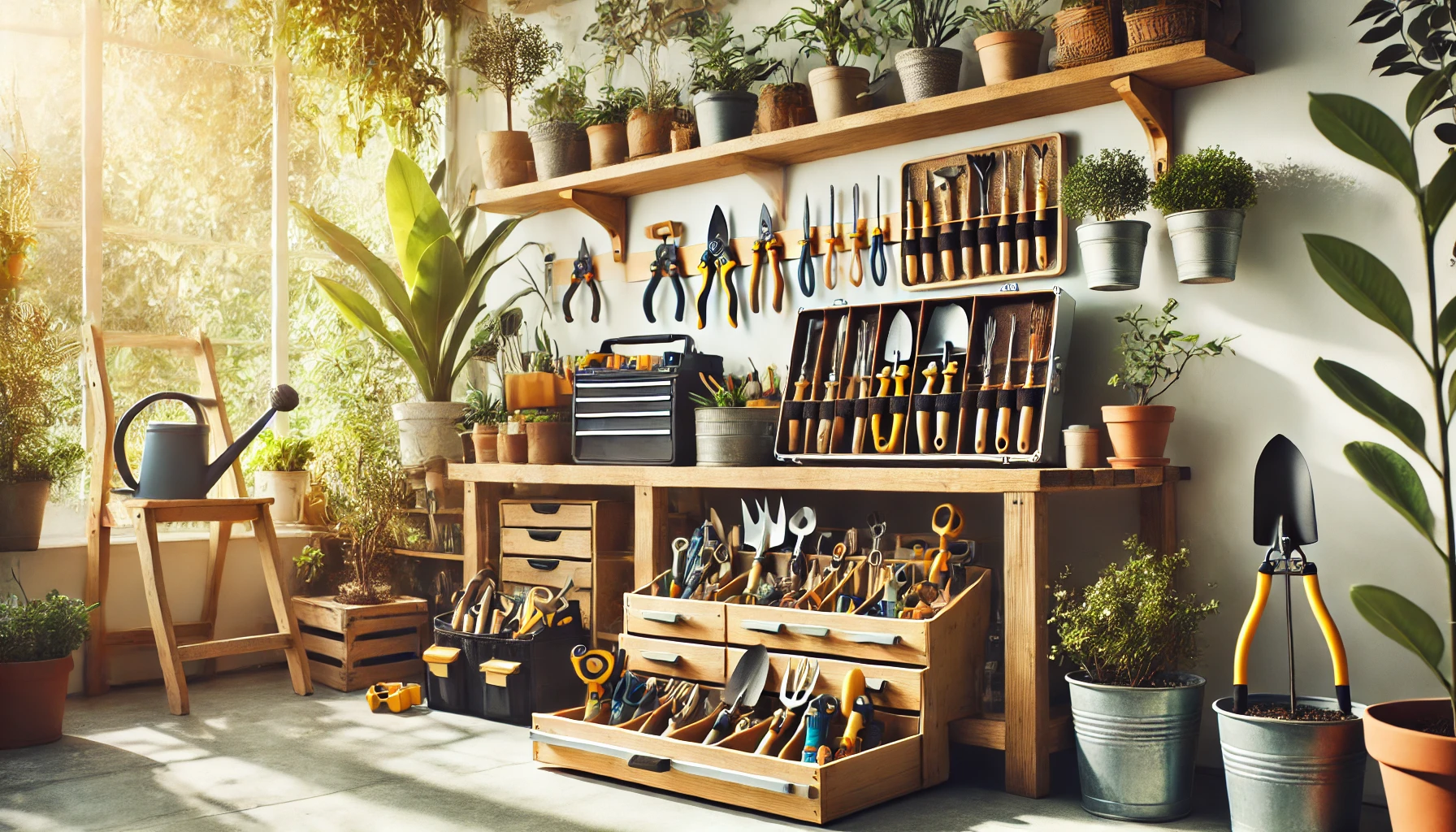
Efficiently using the right tools is essential for maintaining a thriving garden. By planning ahead, cleaning your tools regularly, and using them for their intended purposes, you can ensure your gardening tasks are easier and more effective. Remember, a well-organized workspace and proper technique not only save time but also improve the health and growth of your plants. With these expert tips, you’ll be able to tackle any gardening challenge with confidence and create a beautiful, healthy garden in no time. Happy gardening!
Frequently Asked Questions(FAQ)
What are the essential tools for novice houseplant owners?
For beginners, the basic houseplant tools for novices include a watering can, pruning shears, a soil moisture meter, a plant tray, potting mix, fertilizers, and plant stakes. These tools will help you manage basic plant care tasks such as watering, pruning, and ensuring your plants thrive in their environment.
Do I really need a soil moisture meter?
Yes! A soil moisture meter is a great tool for novices. It takes the guesswork out of watering, ensuring you don’t overwater or underwater your plants. This helps prevent common issues like root rot and dehydration, especially if you’re still learning the signs of healthy soil moisture.
Can I use regular scissors for pruning my plants?
While you can use regular scissors in a pinch, pruning shears are much better suited for plant care. They are specifically designed for clean cuts, which reduces the risk of damaging your plants. Sharp, high-quality pruning shears also make the process easier and more efficient.
How often should I water my plants with a watering can?
The frequency of watering depends on the plant species, but a watering can with a long spout helps you water accurately without over-saturating the soil. Most indoor plants prefer to dry out slightly between waterings, so check the moisture level of the soil before adding more water.
Why do I need a plant tray?
A plant tray helps catch excess water that drains from the pot after watering, preventing spills and water stains on furniture or floors. It’s a simple way to protect your indoor space while keeping your plant’s environment clean and tidy.
Are plant stakes necessary for beginners?
Plant stakes are not essential for all houseplants, but they can be very useful if you have tall or vining plants that need support. They help keep plants upright, guiding their growth in a healthier and more controlled way.
Can I buy basic houseplant tools at a local store?
Yes! Many local nurseries, home improvement stores, and garden centers offer basic houseplant tools for novices. You can also find these tools online, with plenty of affordable options that are beginner-friendly.
How do I choose the right potting mix for my plants?
Different plants have different soil needs. When choosing potting mix, make sure it’s suitable for your specific plants. For example, succulents need well-draining soil, while tropical plants often require moisture-retentive mixes. A general-purpose potting mix works well for most indoor plants, especially for beginners.
What is the best way to use a spray bottle for plant care?
A spray bottle is great for plants that thrive in humid environments, like ferns or orchids. Mist the leaves occasionally to maintain a consistent humidity level, especially in dry indoor environments. Be sure not to over-saturate the leaves, as this can lead to mold or mildew.
Can I use basic houseplant tools for all types of plants?
Yes! The basic houseplant tools for novices mentioned are versatile and can be used for a wide variety of houseplants. However, it’s important to ensure that each tool is appropriate for the size and type of plant you have. Larger plants might need bigger tools, while small houseplants can be managed with compact versions.
